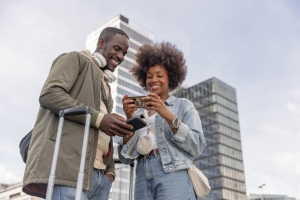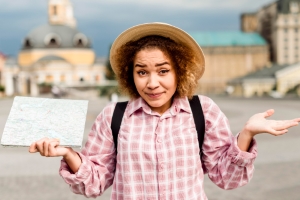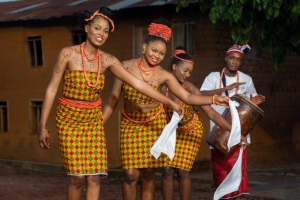Introduction
Namibia is one of Africa’s safest travel destinations, known for its stunning landscapes, incredible wildlife, and friendly people. Whether you’re exploring the towering dunes of Sossusvlei, tracking wildlife in Etosha National Park, or driving along the remote Skeleton Coast, staying safe should be a top priority.
This guide will help you navigate Namibia safely, covering crime prevention, road safety, health precautions, and wildlife encounters.
1. General Safety & Crime Prevention
Namibia is generally safe for tourists, but like any destination, petty crime can occur. Here’s how to stay secure in cities and tourist areas:
✅ Stay aware in Windhoek & Swakopmund – These cities are safe, but pickpocketing and minor theft can happen in crowded places.
✅ Avoid carrying large sums of cash – Use a money belt or keep valuables in a hotel safe.
✅ Be cautious at ATMs – Use ATMs inside banks or malls, and watch for suspicious individuals.
✅ Don’t leave belongings unattended – Theft from cars and public places can occur.
✅ Avoid walking alone at night – Stick to well-lit areas or take a taxi.
✅ Be discreet with valuables – Expensive jewelry, cameras, and electronics can attract unwanted attention.
2. Road Safety: Driving in Namibia
Namibia is a self-drive paradise, but its vast, remote landscapes come with unique challenges. Follow these tips to stay safe:
🚗 Rent a 4×4 for long distances – Many roads are gravel or sand, requiring a sturdy vehicle.
🚗 Check road conditions – Some areas, like the Skeleton Coast and Damaraland, have rough terrain.
🚗 Drive cautiously on gravel roads – Maintain a safe speed to avoid skidding.
🚗 Watch for wildlife & livestock – Especially at dawn and dusk, animals often cross roads unexpectedly.
🚗 Carry extra fuel & water – Gas stations can be far apart, especially in the desert.
🚗 Know emergency numbers – Have the contact information for your car rental company and local authorities.
🚗 Avoid driving at night – Poor lighting, animals on the road, and rough terrain make it dangerous.
💡 Tip: If renting a car, get insurance that covers tire and windshield damage, as gravel roads can be tough on vehicles.
3. Wildlife Safety: Staying Safe on Safari
Namibia’s national parks and reserves offer unforgettable wildlife experiences, but it’s essential to respect nature:
🦁 Stay inside your vehicle in game parks – Animals may approach, but never exit your car.
🦁 Keep a safe distance from wildlife – Elephants, lions, and rhinos can be unpredictable.
🦁 Follow park rules & guide instructions – Rangers know best how to navigate wildlife encounters.
🦁 Do not feed wild animals – This can make them aggressive or dependent on humans.
🦁 Be cautious around water sources – Crocodiles and hippos are common in rivers and lakes.
🦁 Use a flashlight at night in campsites – Scorpions and snakes may be present.
🚨 Emergency Contact: If in a national park, report emergencies to the nearest ranger station.
4. Health & Medical Safety
Namibia has good healthcare facilities, but many remote areas lack medical services. Be prepared with these health tips:
💉 Vaccinations: Ensure you have Yellow Fever (if coming from an affected country), Hepatitis A & B, and Typhoid shots.
🦟 Malaria Prevention: Malaria is a risk in northern Namibia (Caprivi, Kavango, Etosha in rainy season).
- Take anti-malaria medication if traveling to these areas.
- Use mosquito repellent and sleep under a mosquito net.
☀️ Heat & Sun Protection: - Drink plenty of water to avoid dehydration.
- Wear sunscreen, a hat, and sunglasses—the sun is intense.
💊 Carry a First Aid Kit: Include painkillers, rehydration salts, and any prescription medications.
🚨 Emergency Numbers:
- Ambulance: 211111 (Windhoek) / 10177 (National)
- Police: 10111
- Tourist Assistance Helpline: +264 61 290 6000
5. Desert & Remote Area Survival
Namibia’s landscapes are breathtaking but remote and harsh. If venturing into deserts or isolated regions, follow these precautions:
🏜 Tell someone your itinerary – Inform your hotel or travel agency about your route.
🏜 Carry extra supplies – Water, food, and fuel are essential in case of delays.
🏜 Download offline maps – Cellular service can be limited in remote areas.
🏜 Know emergency procedures – If stranded, stay with your vehicle and signal for help.
🏜 Check weather conditions – Flash floods can occur in dry riverbeds.
6. Water Safety: Oceans, Rivers & Lakes
Namibia’s coastline and rivers can be dangerous due to strong currents, wildlife, and hidden hazards:
🌊 Be cautious of strong currents – Swakopmund and Walvis Bay have rough Atlantic waters.
🌊 Do not swim in rivers & lakes – Crocodiles and hippos are a real danger.
🌊 Wear life jackets on boat trips – When exploring the Okavango or Zambezi River.
💡 Tip: Always check local advice before swimming in any body of water.
7. Avoiding Scams & Tourist Traps
While most Namibians are welcoming, scams targeting tourists do exist:
⚠️ Fake Tour Operators – Book tours through reputable agencies and check reviews.
⚠️ Overpriced Souvenirs – Bargain politely but be aware of overcharging.
⚠️ “Helpful” Strangers at ATMs – Never accept assistance from strangers when withdrawing money.
👉 Tip: Trust official guides and staff at hotels for recommendations.
Conclusion
Namibia is an incredible destination, and by following these safety tips, you can enjoy a stress-free and memorable trip. Whether you’re exploring the vast Namib Desert, encountering wildlife on safari, or driving through remote landscapes, staying aware and prepared will ensure your adventure is both exciting and safe.✈️ Ready to explore Namibia? Stay safe and enjoy the journey! 🌍🏜️







